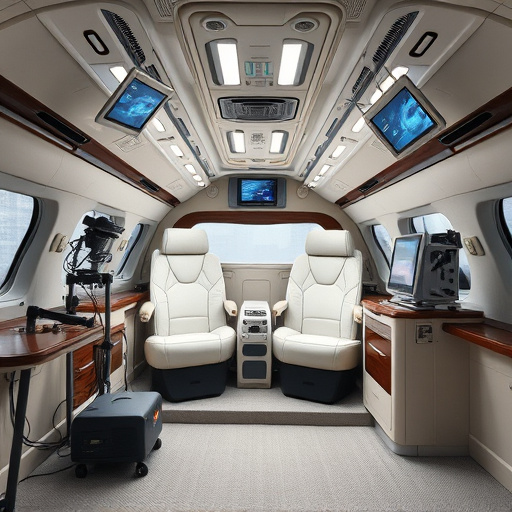Cold Air Intake (CAI) modifications significantly enhance vehicle acceleration by drawing in colder, denser air, improving engine efficiency, fuel burning, and power output. This results in quicker 0-60 mph times and an overall better driving experience, especially in high-performance cars. Measurement techniques such as dynamometers and diagnostic tools are crucial for understanding the effects of CAI on throttle response and acceleration dynamics. Professionals use these data to fine-tune settings, ensuring performance gains without compromising engine health or efficiency. Upgrading to high-flow throttle bodies or adjusting electronic throttle control further improves throttle response, leading to a more responsive and agile driving experience.
In today’s competitive automotive market, understanding and enhancing acceleration is key to achieving superior performance. This article delves into two critical aspects of optimization: Cold Air Intake (CAI) and Throttle Response. By exploring these components, we’ll uncover measurement techniques that highlight their impact on overall vehicle dynamics. Furthermore, we’ll discuss strategies for optimizing throttle response, focusing on practical improvements that translate to enhanced driving experience, especially in the context of cold air intake throttle response improvement.
- Understanding Cold Air Intake and Throttle Response
- Measurement Techniques for Acceleration Enhancement
- Optimizing Throttle Response for Improved Performance
Understanding Cold Air Intake and Throttle Response

Cold Air Intake (CAI) and Throttle Response are key components in enhancing vehicle acceleration. CAI involves modifying the air intake system to draw in colder, denser air from outside the engine compartment directly into the combustion chamber. This simple change improves several critical factors that contribute to increased power and acceleration: it reduces restrictions in the airflow, lowers air temperature, and increases air density. As a result, the engine can breathe easier, burn fuel more efficiently, and produce more power.
Throttle response refers to how quickly the engine accelerates when you press the gas pedal. By improving CAI, you not only make the engine more powerful but also enhance throttle response. This is because a CAI ensures that the engine receives a steady supply of cool, rich air, enabling faster fuel combustion and smoother power delivery. The combination of these factors leads to better overall performance, including quicker 0-60 mph times and improved overall driving experience, especially in high-performance vehicles.
Measurement Techniques for Acceleration Enhancement

In the pursuit of enhancing acceleration performance, particularly in vehicles with cold air intakes designed for improved throttle response, various measurement techniques play a pivotal role. These methods allow for precise evaluation of an engine’s behavior under different conditions, enabling tuners and engineers to make data-driven adjustments. One such technique involves using dynamometers, which precisely measure torque and power output while controlling the throttle position. This provides invaluable insights into how modifications impact acceleration dynamics.
Additionally, advanced diagnostic tools like scan tools and data loggers record crucial parameters during acceleration tests. These tools capture real-time data on engine speed, fuel delivery, and air intake temperature, offering a holistic view of performance gains or losses. By analyzing these measurements, professionals can fine-tune settings, optimize fuel mapping, and ensure that modifications enhance acceleration without compromising engine health or efficiency.
Optimizing Throttle Response for Improved Performance

Optimizing throttle response is a key aspect of acceleration enhancement, especially for those looking to improve vehicle performance. One effective method is integrating a cold air intake system. By allowing cooler and denser air to enter the engine, a cold air intake can significantly enhance throttle response, leading to smoother and faster acceleration. This is because cool air is more easily compressed, resulting in a more efficient combustion process.
Additionally, modern throttle bodies are designed to be highly responsive, but their performance can be further optimized. Upgrading to high-flow throttle bodies or adjusting the electronic throttle control settings can fine-tune the throttle response, ensuring that the engine delivers maximum power at low RPMs. This direct connection between the driver’s input and the engine’s output translates into a more agile driving experience, making every acceleration maneuver quicker and more responsive.
In conclusion, understanding the interplay between cold air intake and throttle response is key to unlocking significant acceleration enhancement. By employing advanced measurement techniques, vehicle engineers can optimize these systems for improved performance. This involves fine-tuning throttle calibration, enhancing airflow dynamics, and ensuring rapid response times. Through these strategies, both stock and modified vehicles can achieve remarkable increases in acceleration, providing drivers with a more exhilarating and efficient driving experience.














